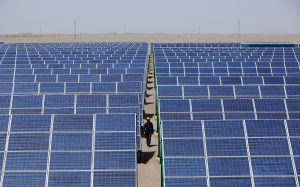Promising seaweed export in global market
Despite its unpopularity in the domestic market, seaweed has become the top export commodity in fisheries industry. Out of 38 provinces in Indonesia, 23 have seaweed production. The fact has made the country a top exporter for seaweed products. The government and the World Bank are helping coastal communities to increase seaweed products.
The Ministry of Marine Affairs and Fisheries held the Seaweed Investment Forum + Festival (SIFFEST) 2022 to boost the growth of domestic seaweed processing industry in order to increase the competitiveness of seaweed products and their derivatives in the global market.
"I hope this activity can become a forum for business and investment for stakeholders in order to attract investment and develop the national seaweed business," Minister Sakti Wahyu Trenggono said in Surabaya during the SIFFEST in November 2022.
He also witnessed the signing of four MoUs among the local administrations, large-scale business actors and individual seaweed businesses. The MoUs are aimed at developing and supplying seaweed raw materials for the industry.
The World Bank also released a project called the Indonesia’s Sustainable Oceans Programs (ISOP). One of the programs is the Coastal Fisheries Initiative Indonesia Challenge Fund (CFI-ICF), which helps the the coastal community and their industry. The CFI-ICF supports PT Rote Karaginan Nusantara and four other businesses in their efforts to attract more investors and gain technical assistance on best practices for sustainable businesses in seaweed sector.
Seaweed centers of production
According to the dataindonesia.id in 2021, the top six centers of seaweed production of 23 provinces are located in:
- South Sulawesi (3.7 million tons)
- East Nusa Tenggara (NTT) (1.3 million tons)
- West Nusa Tenggara (NTB) (758,714 tons)
- East Java (688,244 tons)
- Central Sulawesi (673,786 tons)
- North Kalimantan(627,875 tons)
Indonesia's seaweed export value reached US$ 219 million in 2021 while the export volume was recorded at 187.7 million metric tons. The figure was an increase from 2020's export value of US$ 179 million with the volume of 168,43 million metric tons.
Indonesia's competitors
Even though Indonesia ranked first in the seaweed global market, the country would need to maintain its export volume and quality to face competitors. Below is the list of the competitors:
| Country | Value | Export Volume | To | Value |
| South Korea | US$201.2M | 17.1M (metric tons/MTs) | Japan | US$75.1M |
| China | US$54.8M | 13.1M MTs | Japan | US$21.57M |
| Japan | US$20.3M | 1.4M MTs | Taiwan | US$5.49M |
| USA | US$20.1M | 1.8M MTs | Singapore | US$6.07M |
Export destinations for Indonesia's seaweed
| To | Value (reported by Indonesia) | Value (reported by export country) | Percentage(%) |
| China | $185.64M | $181.6M | 84.63% |
| Vietnam | $5.44M | $5.44M | 2.48% |
| South Korea | $5.40M | $5.40M | 2.46% |
| Canada | $5.15M | $3.3M | 2.35% |
| Chile | $4.56M | $4.91M | 2.08% |
| Others | $13.17M | ~$9.45M | 6% |
The export growth from seaweed products has been significantly increasing although it still cannot beat Indonesia's prime commodities such as palm oil and coal. However, the growth increased by 22.53% in 2021, compared to the previous year. The country has projected that seaweed export would continue to grow in the future.
Tag
Already have an account? Sign In
-
Start reading
Freemium
-
Monthly Subscription
30% OFF$26.03
$37.19/MonthCancel anytime
This offer is open to all new subscribers!
Subscribe now -
Yearly Subscription
33% OFF$228.13
$340.5/YearCancel anytime
This offer is open to all new subscribers!
Subscribe now






